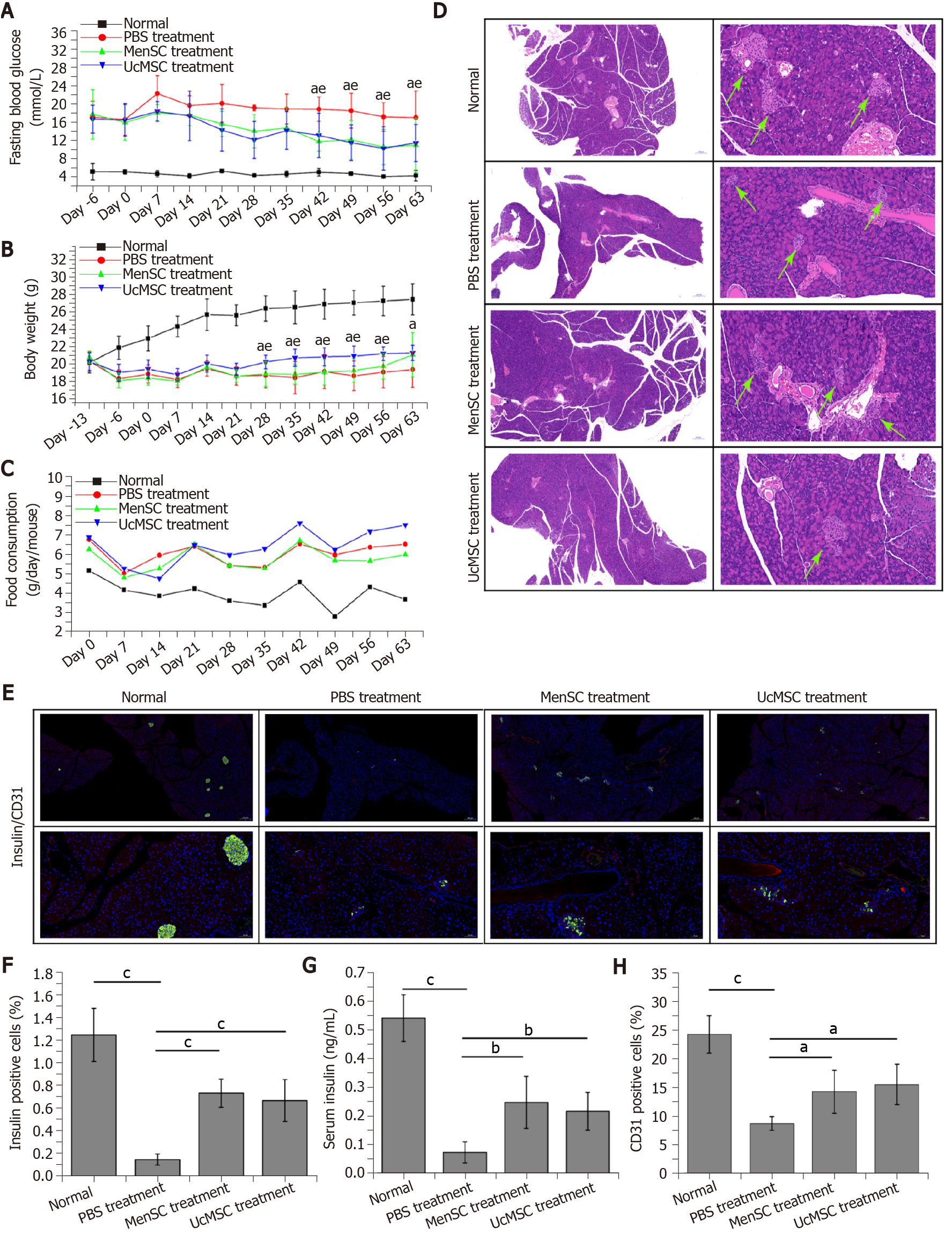Copyright
©©The Author(s) 2022.
World J Stem Cells. Jan 26, 2022; 14(1): 104-116
Published online Jan 26, 2022. doi: 10.4252/wjsc.v14.i1.104
Published online Jan 26, 2022. doi: 10.4252/wjsc.v14.i1.104
Figure 2 Menstrual blood-derived endometrial stem cells transplantation significantly improves the morphology and function of the pancreas in streptozotocin-induced type 1 diabetes mice.
A: Both Menstrual blood-derived endometrial stem cells Menstrual blood-derived endometrial stem cells (MenSC) and Umbilical cord-derived mesenchymal stem cell (UcMSC) treatments significantly improved the fasting blood glucose levels. aP < 0.05 UcMSC treatment vs PBS treatment; eP < 0.05 MenSC treatment vs PBS treatment; B and C: UcMSC treatment significantly inhibited the body weight loss and increased the food intake in streptozotocin-induced type 1 diabetes mice. aP < 0.05 UcMSC treatment vs PBS treatment; eP < 0.05 UcMSC treatment vs MenSC treatment; D: Morphological changes in the pancreases of mice were examined by hematoxylin and eosin staining, and the islets are indicated by green arrows. The images in the left column provide a full view of the pancreas, and the images in the right column are locally magnified; E, F and H: Insulin+ (green fluorescence) and CD31+ (red fluorescence) cells in the mouse pancreas were detected by immunofluorescence and quantified by IPP software. The images in the top row provide a full view of the pancreases, and the images in the bottom row are locally magnified; G: The serum insulin levels in the mice were determined by ELISA. aP < 0.05; bP < 0.01; cP < 0.001. MSC: Mesenchymal stem cell; UcMSC: Umbilical cord-derived MSC; MenSC: Menstrual blood-derived endometrial stem cells.
- Citation: Sun YL, Shang LR, Liu RH, Li XY, Zhang SH, Ren YK, Fu K, Cheng HB, Yahaya BH, Liu YL, Lin JT. Therapeutic effects of menstrual blood-derived endometrial stem cells on mouse models of streptozotocin-induced type 1 diabetes. World J Stem Cells 2022; 14(1): 104-116
- URL: https://www.wjgnet.com/1948-0210/full/v14/i1/104.htm
- DOI: https://dx.doi.org/10.4252/wjsc.v14.i1.104









